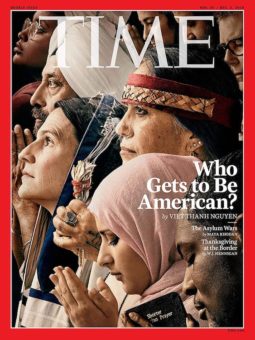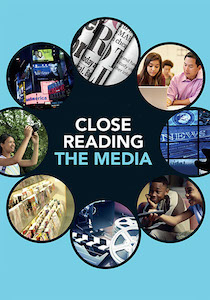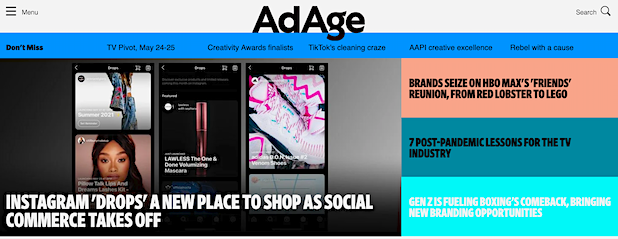Teaching Media Literacy Isn’t Optional These Days
On May 18, Frank Baker co-hosted a webinar that featured many media literacy resources. Find the Google slides and streamed archive here. On June 17, Frank will be a panelist during NCTE’s virtual discussion of the documentary Trust Me and the need for a stronger focus on critical media literacy in the K-12 curriculum. Learn more!
A MiddleWeb Blog
For decades, most American public schools treated media literacy as optional – something good to teach “when time allows.” With the advent of high stakes testing, pacing guides and power standards, time seldom did.
Now change is in the air. The rampant expansion of largely unfettered social media and its impact on society in the past several election cycles are finally stirring some serious conversation about making media literacy a curriculum priority.
Any educator who doubts the urgency of that conversation need only watch the award-winning documentary Trust Me and its explanation of “brain-hacking.”
So what do we want students to know about “the media”? That’s a big question. As a media educator, I know that middle schoolers’ fascination with media is another one of those “teachable moment” opportunities to address learning standards and strengthen our civic and consumer culture.
When I began teaching media literacy more than 20 years ago, it was important for me to use specific examples. Most my workshops occurred in school library media centers, where I would take time to scan the bookshelves to determine if a school had any books that dealt with the media.
Mostly I was disappointed. I could not understand the disconnect: students love and attend to the media, yet most of the libraries had few, if any, books about the media. [That’s one reason I post recommended books in many of my categories on the Media Literacy Clearinghouse website.
That was also the catalyst for me to start writing books about media literacy. I am especially grateful to MiddleWeb and its publishing partner Routledge Eye On Education for spearheading the publication of Close Reading The Media: Literacy Lessons and Activities for Every Month of the School Year.
Media literacy encompasses many ideas and concepts, and in this post I want to call attention to some resources you might wish to consider, including selections from my many articles published by MiddleWeb.
Advertising Everywhere They Look
Ads and marketing are huge in the lives of young people. Advertising comes into focus especially during political campaign season, the holiday time of year and around the annual Super Bowl game, and teaching with and about ads can be especially engaging.
Ads are inescapable and I am always engaging educators and students and helping them understand how they work to persuade us. Argument and “techniques of persuasion” are just two ways to connect your school’s teaching and learning standards to advertising (a form of informational text.)
The bible of the advertising industry is Advertising Age magazine. While it may be too expensive for K-12 schools to subscribe to, many of its timely stories are available free online. An alternative is AdWeek.com.
With many students deeply embedded in social media, YouTube, and television in all its current manifestations, now might be a good time for them to consider how they are “sold” to advertisers via the various platforms they frequent.
Teaching Visual Literacy with Pix and Mags
For a long time I’ve been recommending that educators consider using contemporary images and magazines as tools for teaching visual literacy.
Every day, images in the news pass through our radar screens. Visual literacy invites us to teach students how to read, analyze and deconstruct those images. Recently, my colleague and I co-hosted a webinar in which we invited participants to consider the photos that emanated from the January insurrection at the US Capitol. Our guest, Michael Shaw, manages the “Reading The Pictures” website which regularly uses contemporary photos.
Knocked out by those faces & their implications as vaccination outreach goes door-to-door. And there’s nothing skeletal about the passion & body language of this Middle School science teacher mid-Zoom. What a benefit to NYC having @JamesEstrin on the beat. pic.twitter.com/KhGG5wOk7F
— Reading The Pictures (@ReadingThePix) May 24, 2021
The manipulation of images has exploded, and helping students question images is also worthy of your consideration. Several years ago I created the Is Seeing Believing? resource which contains many examples.
Magazines have become staples in many school library media centers. For a long time I’ve recommended that these periodicals are perfect tools for student analysis. Magazine covers employ various techniques that students could become familiar with.

Using magazines outside their reading interest, I challenged students gathered in the library to consider font, color, layout, cover subject and more. The next day, they returned to the library and used computers to recreate the magazine cover they had been assigned. To say it was engaging is an understatement.
Have your students consider a celebrity or sports star and have them locate magazine covers that feature that person. Comparing and contrasting how the personality is represented in different venues is worthwhile, as I demonstrated with the LeBron James magazine activity.
Teaching Students How to Read The Internet
In a recent Middleweb column, I referenced recent studies that revealed how little today’s students understand how to read the Internet. Spending time helping them learn to question and verify what they consume is vital. It may prove to be all-important.
There is a solution and it’s at your fingertips. If you’re not already aware of the free “Civic Online Reasoning” resource of lesson plans and assessments, now would be a great time to become familiar with this excellent resource.
With fake news and disinformation rampant, one of the proven strategies that experts are recommending is known as “Lateral Reading.” Watch this brief video that explains this simple but effective strategy (part of Canada’s Civix site).
Maybe the question I asked at the beginning of this post – what do we want students to know – can be flipped and directed to your students themselves. After sharing resources like the Trust Me documentary, ask students what they think they need to know about the media.
Their answers can help guide your thinking as you and your colleagues begin to shape an authentic literacy curriculum for your media-drenched adolescents. Make it your goal to help them become better critical thinkers in the 21st century.
Frank Baker has been writing about media literacy in education for more than 20 years. He maintains the “Media Literacy Clearinghouse” website of education resources. He is a frequent panelist, consultant and workshop presenter. His lifelong work in media literacy was recognized in 2019 by UNESCOs Global Alliance Partnership for Media & Information Literacy. He welcomes feedback at fbaker1346@gmail.com and invites you to follow him on Twitter @fbaker where he frequently shares useful media literacy resources.




































